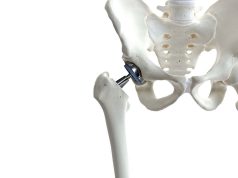But system has no significant impact on post-op clinical outcomes among adults undergoing surgery
TUESDAY, Jan. 30, 2018 (HealthDay News) — For adults undergoing surgical procedures under general anesthesia, an intraoperative decision support system with real-time visualization can improve process measures, but not clinical outcomes, according to a study published in the February issue of Anesthesiology.
Sachin Kheterpal, M.D., from the University of Ann Arbor in Michigan, and colleagues retrospectively compared electronic health record data over a six-year period across three groups: experimental cases, in which the intraoperative decision support system was used for ≥75 percent of the case (7,954 patients); parallel controls (system used 74 percent or less; 10,9933 patients); and historical controls before implementation of the system (7,882 patients). Participants were adults under general anesthesia, who had advanced medical disease, with case duration of 60 minutes or longer, and length of stay of two days or more.
The researchers found that in analyses adjusted for propensity scores, comparing experimental cases to parallel controls, the median and effect size for hypotension was 1 versus 1 min (P < 0.001; β = −0.19); crystalloid administration: 5.88 versus 6.17 ml/kg/h (P < 0.001; β = −0.03); ventilator tidal volume >10 ml/kg: 28 versus 37 percent (P < 0.001; adjusted odds ratio, 0.65); and encounter charges: $65,770 versus $69,373 (P < 0.001; β = −0.003). There was no significant impact on the secondary clinical outcome measures.
“The use of an intraoperative decision support system was associated with improved process measures, but not postoperative clinical outcomes,” the authors write.
One author disclosed financial ties to AlertWatch, the company that developed the decision support system being evaluated.
Copyright © 2018 HealthDay. All rights reserved.








